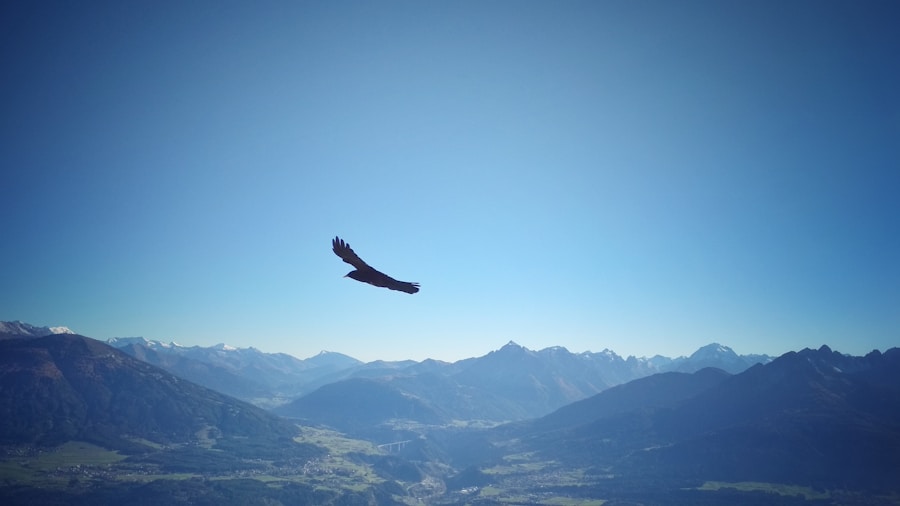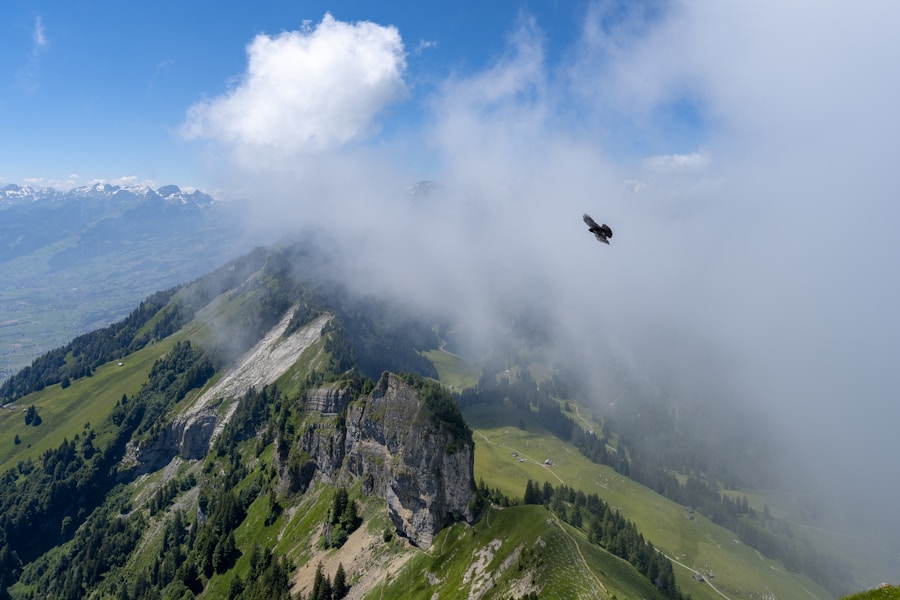Download links
How to install Soaring through the Skies: The Thrill of Wingsuit Flying APK?
1. Tap the downloaded Soaring through the Skies: The Thrill of Wingsuit Flying APK file.
2. Touch install.
3. Follow the steps on the screen.
Description
Wingsuit flying, a thrilling and visually stunning extreme sport, has its roots in the early 20th century. The concept of gliding through the air with a suit designed to increase surface area can be traced back to the pioneering work of aviators and inventors.
Although his endeavor ended tragically, it laid the groundwork for future innovations in human flight. The modern wingsuit, however, began to take shape in the late 1990s. The first wingsuits were developed by a group of skydivers who sought to extend their freefall time and enhance their aerial maneuvers.
Notable figures such as Patrick de Gayardon and Jari Kuosma played pivotal roles in refining wingsuit design, incorporating materials that allowed for better aerodynamics and control. By the early 2000s, wingsuit flying had gained traction within the skydiving community, leading to the establishment of various wingsuit competitions and events that showcased the sport’s exhilarating potential.
Key Takeaways
- Wingsuit flying originated in the 1930s with the development of the first wingsuit by a French inventor.
- The science behind wingsuit flying involves aerodynamics and the use of the wingsuit to create lift and control descent.
- Training and safety measures for wingsuit flying include extensive practice, proper gear, and adherence to safety protocols.
- Some of the most breathtaking wingsuit flying locations include the Swiss Alps, the Grand Canyon, and the mountains of Norway.
- The rising popularity of wingsuit flying is attributed to advancements in technology, increased media coverage, and the thrill-seeking nature of the sport.
The Science Behind Wingsuit Flying
The Science of Aerodynamics
The principles of aerodynamics come into play as the flyer navigates through the air, utilizing lift and drag to control their descent. The lift generated by a wingsuit is influenced by several factors, including the angle of attack, speed, and body position. A wingsuit flyer must maintain an optimal angle to maximize lift while minimizing drag.
Mastering Body Positioning
This delicate balance requires skillful body positioning; for instance, extending the arms and legs can increase surface area and enhance lift, while tucking in can reduce drag for faster speeds.
Terminal Velocity and Extended Flight
The physics of wingsuit flying also involves understanding terminal velocity, which is the maximum speed an object can reach as it falls through the atmosphere. Wingsuit flyers can achieve a horizontal flight path that significantly extends their freefall time compared to traditional skydiving.
Training and Safety Measures for Wingsuit Flying

Training for wingsuit flying is a rigorous process that demands both physical fitness and mental acuity. Aspiring wingsuit flyers typically begin their journey with a solid foundation in skydiving. Most experts recommend completing at least 100 jumps in a standard jumpsuit before transitioning to a wingsuit.
This experience helps develop essential skills such as freefall control, altitude awareness, and emergency procedures. Many training programs also emphasize the importance of understanding weather conditions and how they can affect flight performance. Safety measures are paramount in wingsuit flying due to the inherent risks associated with the sport.
Flyers are encouraged to use advanced parachute systems equipped with automatic activation devices (AADs) that deploy the parachute if the flyer reaches a certain altitude without having done so manually. Additionally, wingsuit flyers often train in groups, allowing for real-time feedback and support during jumps. Pre-jump briefings are standard practice, where participants discuss flight paths, potential hazards, and emergency protocols.
The use of helmets and specialized gear further enhances safety, providing protection against potential impacts during flight or landing.
The Most Breathtaking Wingsuit Flying Locations
| Location | Altitude (feet) | Distance (miles) | Best Time to Visit |
|---|---|---|---|
| Lauterbrunnen Valley, Switzerland | 9,744 | 2.5 | May – September |
| The Dolomites, Italy | 10,968 | 3.1 | June – August |
| Chamonix, France | 12,605 | 3.7 | July – September |
| Zion National Park, USA | 7,000 | 2.8 | April – October |
| Rio de Janeiro, Brazil | 7,717 | 2.2 | June – August |
Wingsuit flying offers enthusiasts the chance to experience some of the most breathtaking landscapes on Earth from an entirely unique perspective. One of the most iconic locations for wingsuit flying is the Swiss Alps, where towering peaks and deep valleys create an exhilarating backdrop for flyers. The combination of high-altitude jumps and stunning scenery makes this region a favorite among experienced wingsuit pilots.
Notable sites include Lauterbrunnen Valley, known for its dramatic cliffs and picturesque waterfalls, which provide an ideal setting for both novice and seasoned flyers. Another remarkable destination is Norway’s fjords, where steep cliffs plunge into deep blue waters. The combination of rugged terrain and expansive vistas creates an awe-inspiring environment for wingsuit flying.
Locations such as Kjeragbolten—a boulder wedged between two cliffs—offer thrilling jump points that allow flyers to soar above breathtaking landscapes while experiencing the rush of freefalling through crisp mountain air. Similarly, in the United States, locations like Moab in Utah provide stunning red rock formations that serve as dramatic backdrops for wingsuit flights, attracting adventurers from around the globe.
The Rising Popularity of Wingsuit Flying
In recent years, wingsuit flying has seen a surge in popularity, fueled by advancements in technology and increased accessibility to training resources. Social media platforms have played a significant role in this trend, allowing wingsuit flyers to share their experiences and breathtaking footage with a global audience. As videos showcasing daring jumps and stunning landscapes go viral, more individuals are inspired to take up the sport themselves.
The growth of wingsuit flying can also be attributed to organized events and competitions that promote camaraderie among enthusiasts. Events such as the World Wingsuit League have gained traction, providing a platform for pilots to showcase their skills while fostering a sense of community within the sport. Additionally, commercial operators have begun offering wingsuit experiences for thrill-seekers who may not have prior skydiving experience but wish to experience the exhilaration of flight.
This accessibility has opened doors for many aspiring flyers who are eager to embrace this unique form of aerial adventure.
Personal Stories and Experiences from Wingsuit Flyers

The world of wingsuit flying is filled with personal stories that highlight both the thrill and challenges associated with this extreme sport. Many wingsuit flyers recount their first jumps with a mix of excitement and trepidation. For instance, one experienced flyer shared how their initial jump felt like stepping off a cliff into an abyss—an exhilarating moment that transformed into pure joy as they glided through the air.
The sense of freedom experienced during those fleeting seconds is often described as unparalleled, creating an addictive desire to return to the skies. However, personal stories also reflect the inherent risks involved in wingsuit flying. A seasoned flyer recounted a near-miss incident where they narrowly avoided colliding with a rock face during a jump in the Alps.
This experience served as a stark reminder of the importance of preparation and situational awareness in ensuring safety during flights. Many flyers emphasize that while the adrenaline rush is intoxicating, it is crucial to respect the sport’s dangers and approach each jump with caution and respect for one’s limits. Through these narratives, it becomes evident that wingsuit flying is not just about adrenaline; it is also about personal growth, camaraderie among fellow flyers, and an unyielding passion for flight.
Each jump represents a unique blend of skill, preparation, and an appreciation for nature’s beauty from an extraordinary vantage point.
If you’re interested in extreme sports like wingsuit flying, you may also enjoy reading about the latest version of the Microsoft Word APK. Check out the article here to stay updated on the newest features and improvements.
FAQs
What is wingsuit flying?
Wingsuit flying is a type of skydiving where the participant wears a specialized jumpsuit that adds surface area to the body, enabling a significant increase in lift. This allows the person to glide through the air like a bird.
How does a wingsuit work?
A wingsuit works by creating additional surface area with fabric between the arms and body and between the legs. This increased surface area generates lift, allowing the wearer to glide through the air rather than simply free-falling.
Is wingsuit flying dangerous?
Wingsuit flying is considered an extreme sport and comes with inherent risks. It requires extensive training and experience to safely participate in wingsuit flying. Accidents can occur due to human error, equipment failure, or environmental factors.
What kind of training is required for wingsuit flying?
To participate in wingsuit flying, individuals must first become experienced skydivers. They then undergo specialized wingsuit training, which includes learning about the equipment, body positioning, flight techniques, and emergency procedures.
Where can wingsuit flying be done?
Wingsuit flying can be done in designated skydiving locations and drop zones around the world. These locations typically have the necessary infrastructure and safety measures in place to accommodate wingsuit flying.
What equipment is needed for wingsuit flying?
The primary equipment needed for wingsuit flying includes a wingsuit, a parachute system, a helmet, and a altimeter. The wingsuit itself is a specialized jumpsuit with fabric panels between the arms and body and between the legs to create lift.





